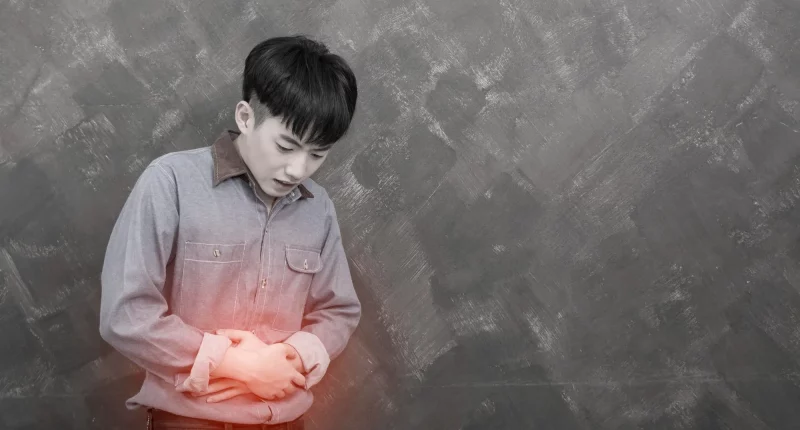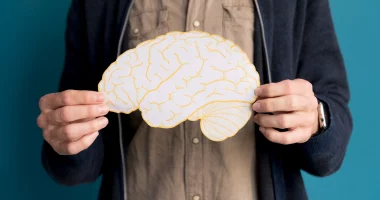Biliary dyskinesia affects the gallbladder, which stores bile, an important digestive fluid that assists break down fats in the small intestine. When someone has biliary dyskinesia, their gallbladder struggles to move bile through the bile ducts into the intestine for digestion.
This condition typically impacts older adults and children. In several hospitals, it’s the most common reason why people undergo surgery to remove their gallbladder.
Symptoms
Biliary dyskinesia is classified as a functional disorder, meaning it disrupts normal bodily functions like digestion without showing any visible abnormalities during medical exams. Therefore, signs are mainly subjective and rely on patient reports.
Patients with biliary dyskinesia often experience severe pain in the upper right abdomen. This pain typically occurs episodically and may intensify after eating especially fatty foods. It can be severe enough to limit daily activities and is often accompanied by nausea, vomiting, and bloating.
The signs of biliary dyskinesia can resemble those of biliary colic, a condition caused by gallbladder stones. These symptoms include sharp abdominal pain that may travel to the right shoulder, with episodes of pain that can be sudden over a prolonged period. Children with this condition may also exhibit a lack of hunger.
It’s important to note that these biliary colic-like symptoms should not be attributed to gallstones.
Causes
The main cause of biliary dyskinesia remains unknown, but several factors are thought to contribute to its development. One likely cause is a basic metabolic disorder that disrupts the normal food movement across the gastrointestinal tract. Alternatively, issues within the gallbladder itself may also play a role in its onset.
Biliary dyskinesia primarily affects adults and children, and it has become a frequent diagnosis in pediatric care settings. In some hospitals specializing in pediatric care, biliary dyskinesia has emerged as the leading reason for surgical removal of the gallbladder.
Additionally, biliary dyskinesia can be linked to cholecystitis, a chronic condition characterized by swelling of the gallbladder. This association underscores the complexity and potential interconnectedness of digestive disorders involving the gallbladder.
Diagnosis
Diagnosing biliary dyskinesia involves specific criteria and diagnostic tests to confirm the condition. The diagnostic basis includes experiencing pain in the upper right of the abdomen along with a normal gallbladder ultrasound, showing no sludge, gallstones, or other blockages.
When symptoms similar to biliary colic occur alongside a normal ultrasound, extra basis must be found. These include pain episodes lasting over 30 minutes, intermittent symptoms, severe pain affecting daily activities or requiring emergency care, pain becoming continuous, and unrelieved symptoms despite interventions like position changes or antacids. It’s crucial that these symptoms are not caused by other conditions, as indicated by normal laboratory results for liver bilirubin, enzymes, and other relevant levels.
Two primary diagnostic tests used for evaluating biliary dyskinesia are the HIDA scan and upper endoscopy. A HIDA scan involves injecting a radioactive tracer into a vein to track its journey through the liver and into the gallbladder, assessing bile flow when no gallstones are evident on ultrasound. This test helps detect abnormalities in gallbladder function.
An upper endoscopy, conducted on an outpatient basis, uses a flexible and thin tube with a camera for examination. This procedure helps eliminate other upper gastrointestinal disorders, like tumors, ulcers, or reflux, before considering gallbladder removal as a treatment option.
Treatment
Treating biliary dyskinesia usually involves removing the gallbladder through surgery, a procedure known as cholecystectomy. However, some researchers suggest waiting if symptoms have lasted less than 3 months.
Before deciding on cholecystectomy, it’s crucial for people with biliary dyskinesia symptoms to undergo thorough lab tests. These tests check enzymes of the liver, conjugated bilirubin (a substance the body eliminates as waste), amylase, and lipase. Normal results from these tests are necessary to confirm that surgery is a suitable treatment option for biliary dyskinesia.
This approach helps doctors ensure surgery is safe and effective for patients with this condition, improving the chances of successful treatment and recovery.
Prognosis
The prognosis for biliary dyskinesia treated with cholecystectomy is generally favorable, with studies indicating effectiveness in 80 to 90 percent of cases. Following surgery, the sustained relief of symptoms after one year varies, influenced by factors like overall health and age. Research indicates that approximately 50 to 70 percent of individuals continue to experience relief from symptoms a year post-surgery. This highlights the variability in outcomes based on individual health characteristics following gallbladder removal.
Summary
Biliary dyskinesia disrupts bile movement from the gallbladder, causing symptoms like upper abdominal pain and digestive discomfort. Diagnosis involves criteria such as pain episodes and normal ultrasound results. Diagnostic tests like the HIDA scan and upper endoscopy confirm the condition and rule out other gastrointestinal disorders. Treatment typically involves cholecystectomy after ensuring normal lab results. Following surgery, 80% to 90% of patients experience symptom relief, with 50% to 70% maintaining relief a year later, depending on age and overall health.









